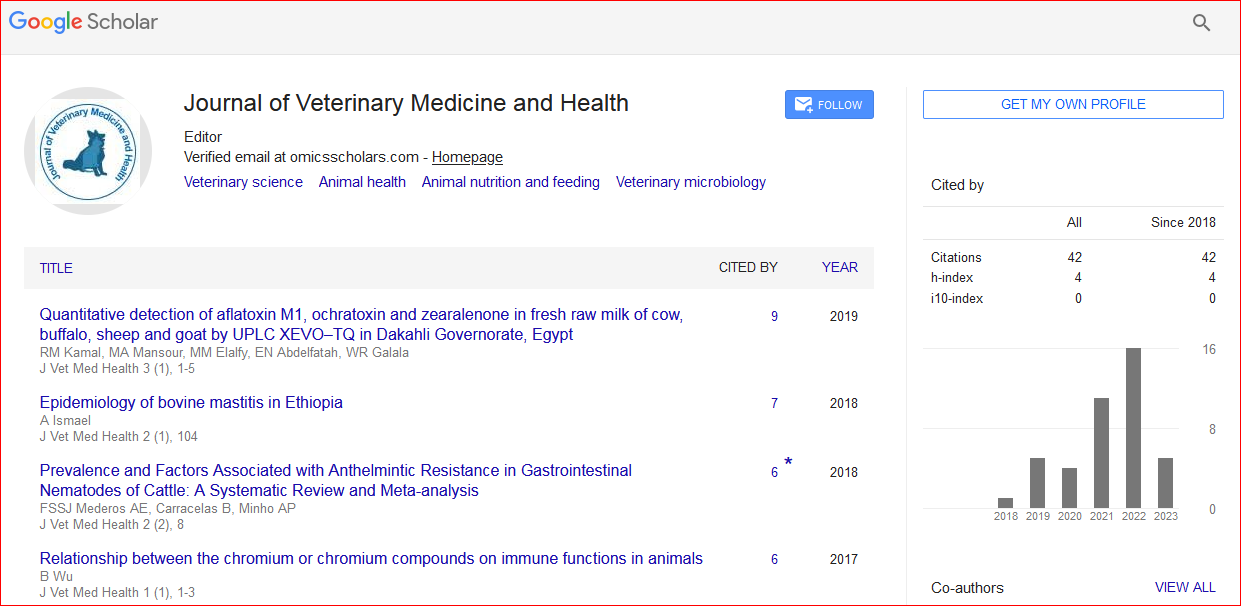Performance of Crossbred Male Cattle Calves Fed Fast Finishing Ration Under Urban Area of Mizan Aman City, South West Ethiopia
*Corresponding Author: Kibreab Yosefe, Department of Southern Agricultural Research Institute, Bonga Research Center, Bonga, Ethiopia, Tel: 0911975437, Email: kibreabyosefe@gmail.com
Citation: Yosefe K (2021) Performance of Crossbred Male Cattle Calves Fed Fast Finishing Ration Under Urban Area of Mizan Aman City, South West Ethiopia. J Vet Med Health, Vol.5 Iss.8 No:1.
Copyright: © 2021 Yosefe K. This is an open-access article distributed under the terms of the Creative Commons Attribution License, which permits unrestricted use, distribution, and reproduction in any medium, provided the original author and source are credited.
Abstract
The study was aimed at evaluating the growth performance and cost per gain of crossbreed (local × Holstein Friesian) male calves under two different improved feed and one conventional feed treatments to determine the appropriate ration for economic production in urban system of Mizan Aman city administration, South Nation Nationality and Reginal State, Ethiopia. Due to Mass oestrus synchronization and artificial insemination service program of dairy cattle, the birth of male calves and unwillingness of rearing them due to voracious eating behavior as well as expensive to feed them at urban area is a rising concern in the study area. The purpose of the reperch is to investigate the coincidence of animals to fattening as a solution.
Twenty-one crossbred (Local × Holstein-Friesian) bulls (average body weight 90.08 ± 2.5 kg) of five months age were divided into three equal groups and fed on three diets (T1, T2 and T3) up to 90 day, where T1 and T2 referred as improved diets from locally available energy and Protein source andT3 referred to the conventional diet.T1=Roasted ground and decaffeinated coffee(70%) + Rice bran(30%)+Pasture hay,T2=Bean bran(70%) + Taro( 30%)+Pasture hay and T3= Pasture hay
The results revealed that dry matter intake (DMI), feed conversion ratio (FCR) and average daily weight gain (ADG) varied significantly (P< 0.01) among different treatment groups. Feed cost expressed as per kg live weight gain (EB/kg LWG); 1USD=27.58 Ethiopian Birr).cross breed male calves feed T2 had significantly (p<0.1) higher dry mater intake (6.4 kg/day) , FCR (12.03 kg/day) than T1 (5.5 kg/day dry matter intake and 11 DM intake/daily gain of FCR) and T3(1.63 kg/day DMI and 9.8 DM intake/daily gain FCR).Crossbred bulls fed diet T2 had significantly (P<0.1) higher ADG (0.53 kg/day/bull) than T3 (0.17kg/day/bull) and T1 (0.50 kg/day/bull) feed and comparatively lower feed costs (8.3 EB/kg LWG) as compared with T3 (12.12 EB/kg LWG) and T1(11.24 EB/kg LWG.
Therefore, considering the growth performance and cost per kg gain of the experimental animals, it is concluded that the crossbred (L× HF) bulls treated with T1 is economic male cattle calves fast finishing ration next to T2 in study area.

 Spanish
Spanish  Chinese
Chinese  Russian
Russian  German
German  French
French  Japanese
Japanese  Portuguese
Portuguese  Hindi
Hindi 